Hydrocyclone with a Tangent-Circle Inlet CFD Simulation, Paper Numerical Validation
$280.00 Student Discount
- The problem numerically simulates the Hydrocyclone with a Tangent-Circle Inlet using ANSYS Fluent software.
- We design the 3-D model with the Design Modeler software.
- We mesh the model with ANSYS Meshing software, and the element number equals 228517.
- This simulation is validated with a reference article.
- We perform this simulation as unsteady (Transient).
- We use the VOF Multiphase model to define water and air.
To Order Your Project or benefit from a CFD consultation, contact our experts via email ([email protected]), online support tab, or WhatsApp at +44 7443 197273.
There are some Free Products to check our service quality.
If you want the training video in another language instead of English, ask it via [email protected] after you buy the product.
Description
Description
The present problem simulates the two-phase flow of air and water inside a Hydrocyclone by ANSYS Fluent software.
The simulation is based on a reference article, “Effects of curvature radius on separation behaviors of the Hydrocyclone with a tangent-circle inlet,” Its results are compared and validated with the results in the article.
The geometry of this model consists of a water inlet and two pressure outlets and is modeled in the Design Modeler. It has meshed in ANSYS meshing. The mesh type used for this geometry is unstructured. The total element number is 228517.
Hydrocyclone Methodology
This project simulates a two-phase flow of water and air inside a Hydrocyclone. The water will enter the computational domain tangentially with a velocity of 6m/s based on the paper.
The Reynolds Stress Model is exploited to solve fluid flow equations, and the VOF multiphase model is used to investigate the phase interactions of the water and air core. The present simulation and its results are transient.
Hydrocyclone Conclusion
At the end of this simulation, the results of the present work are compared and validated with the results obtained by the paper. For this purpose, the diagram in figure 10 shows the changes in the axial velocity of the fluid mixture based on the radial position of the Hydrocyclone.

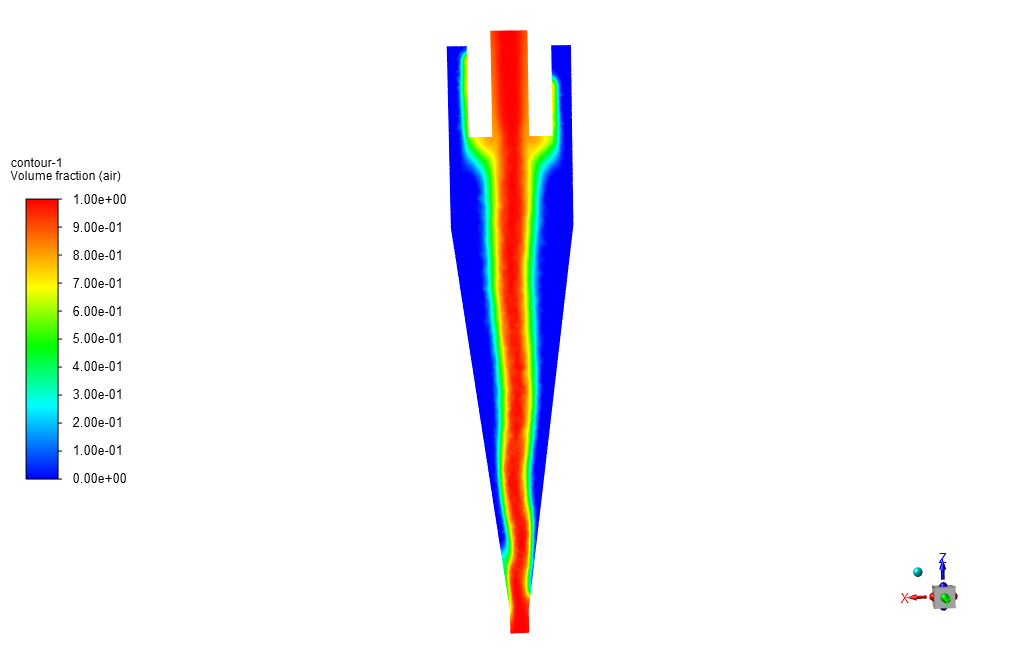
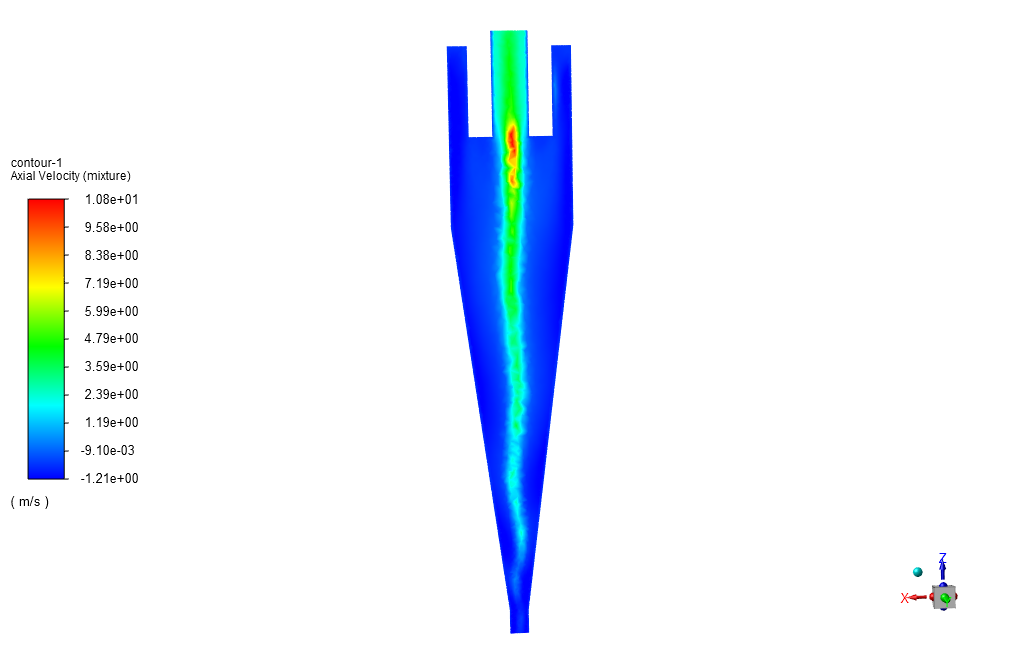
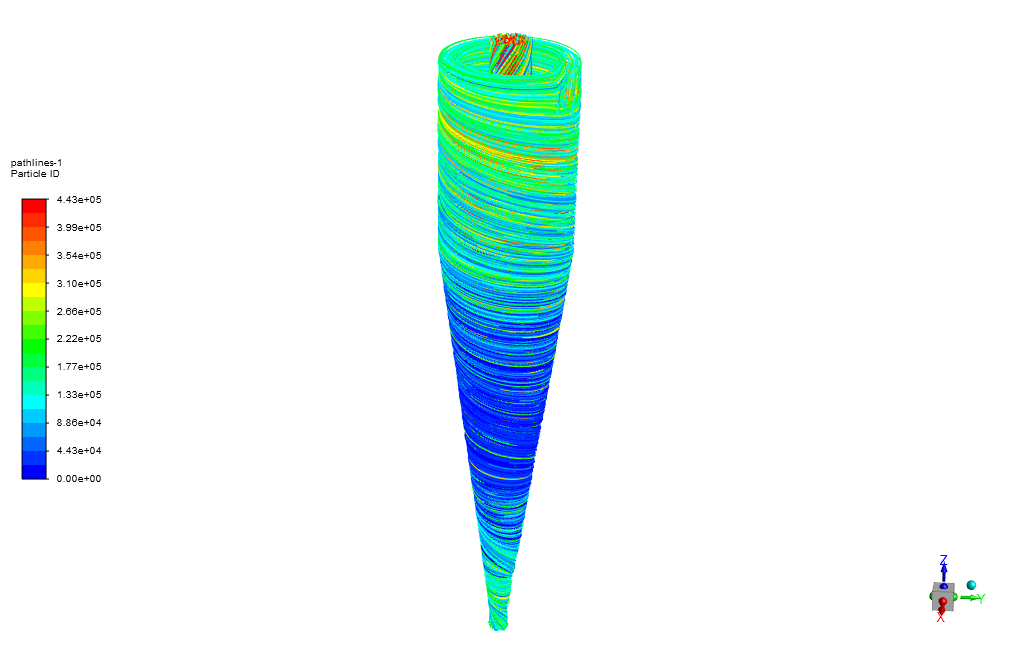
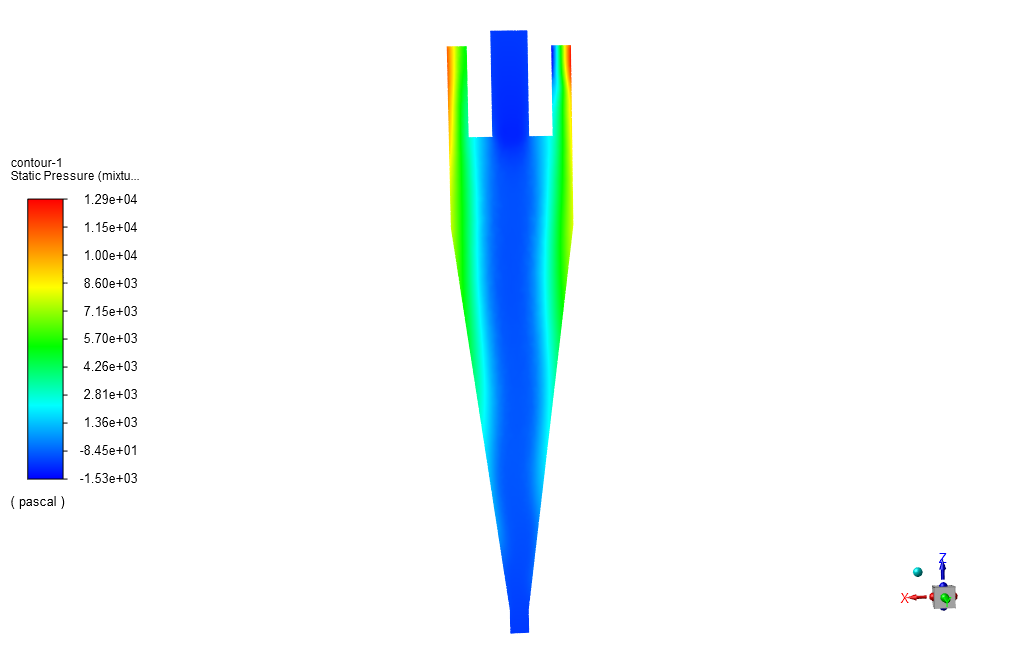
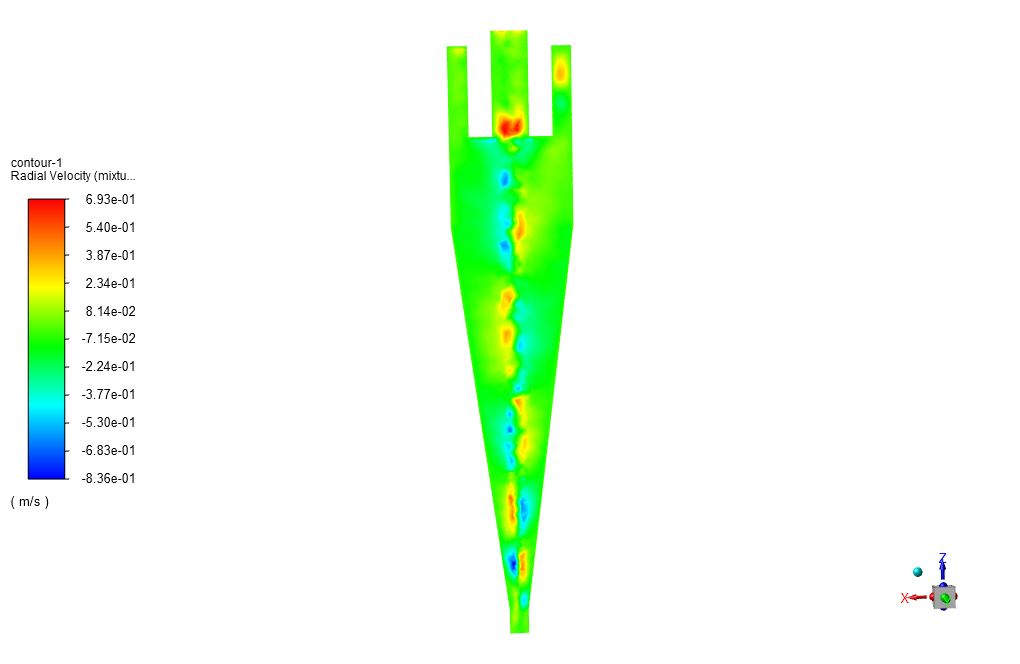
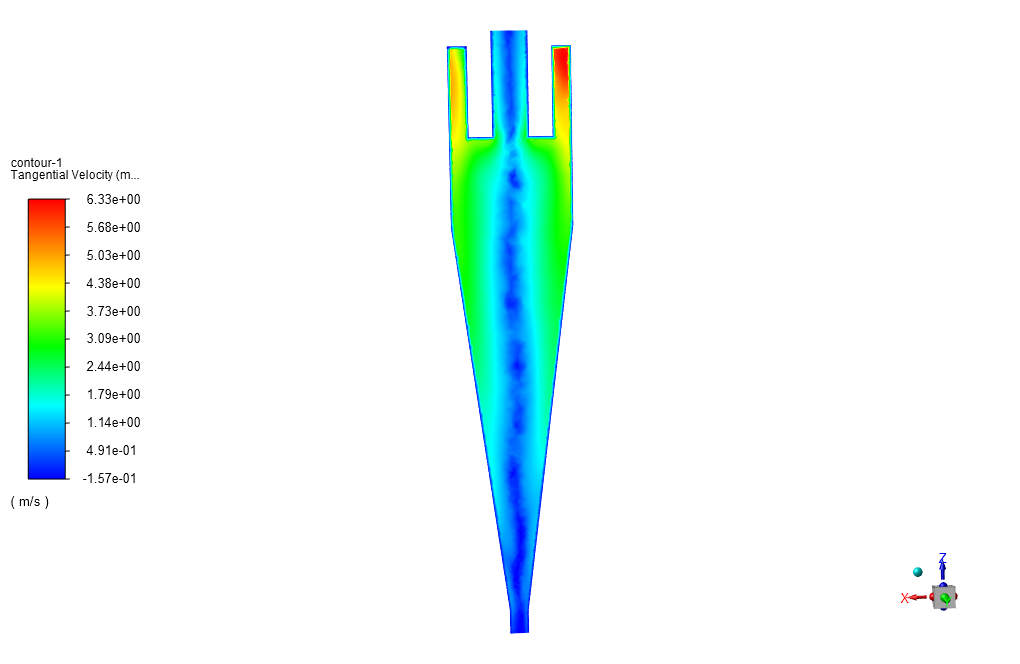
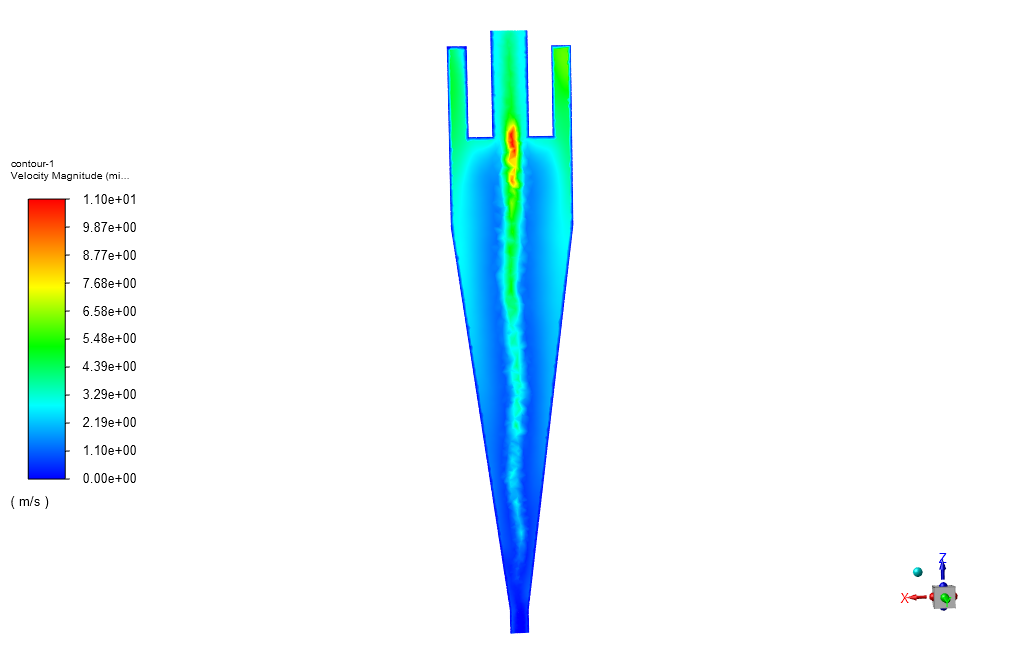
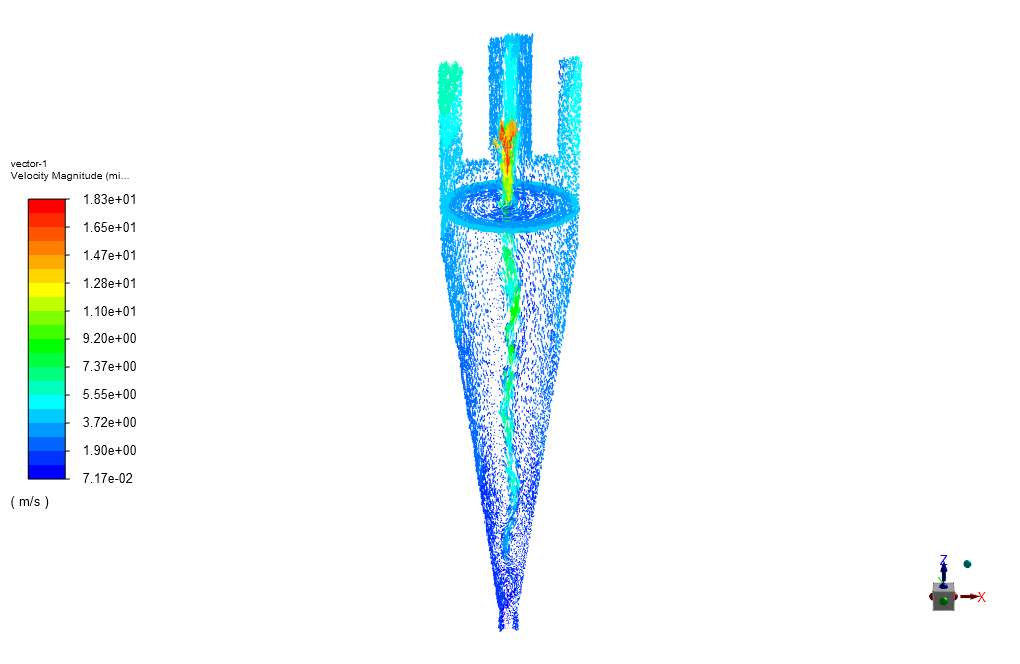
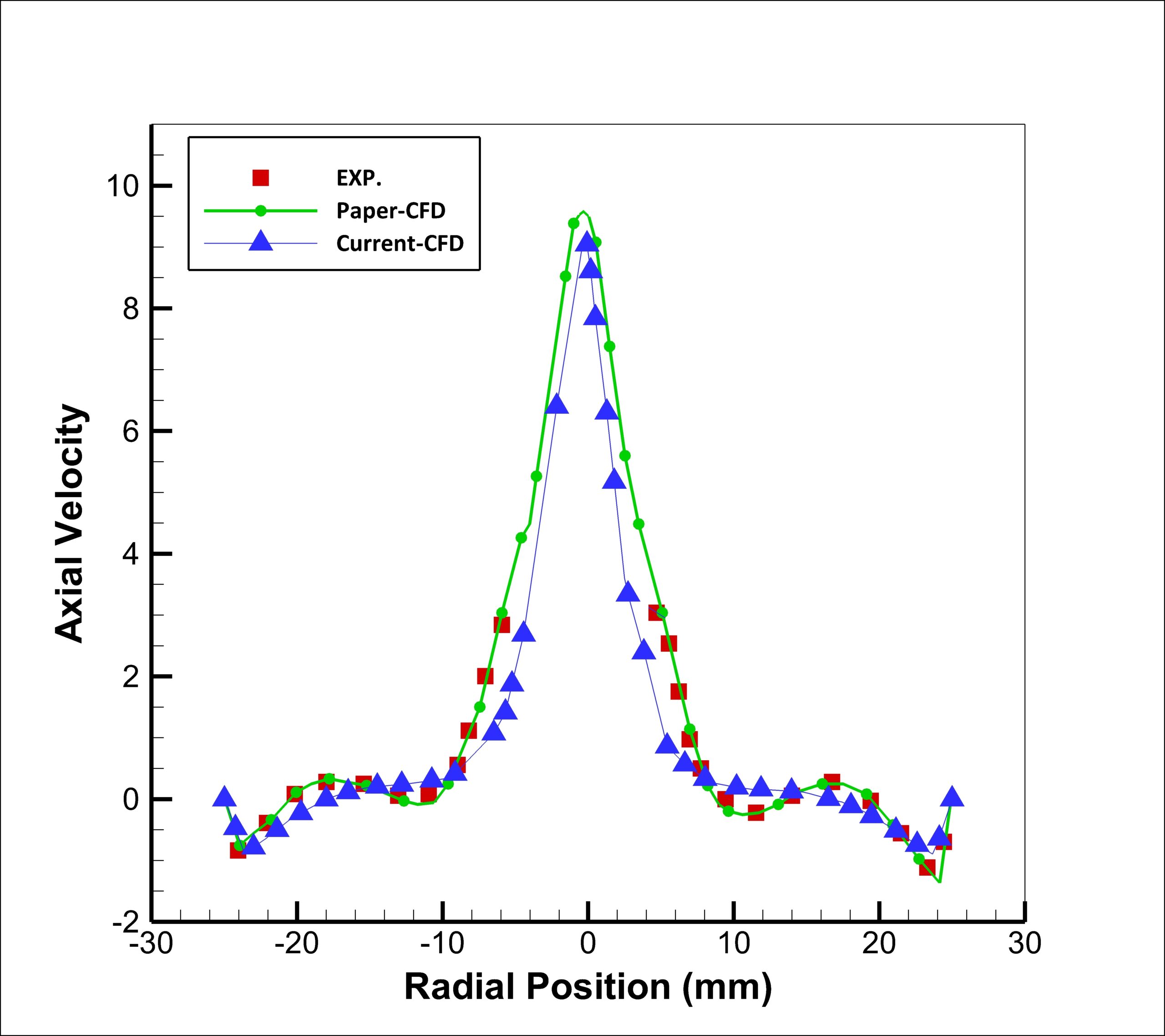
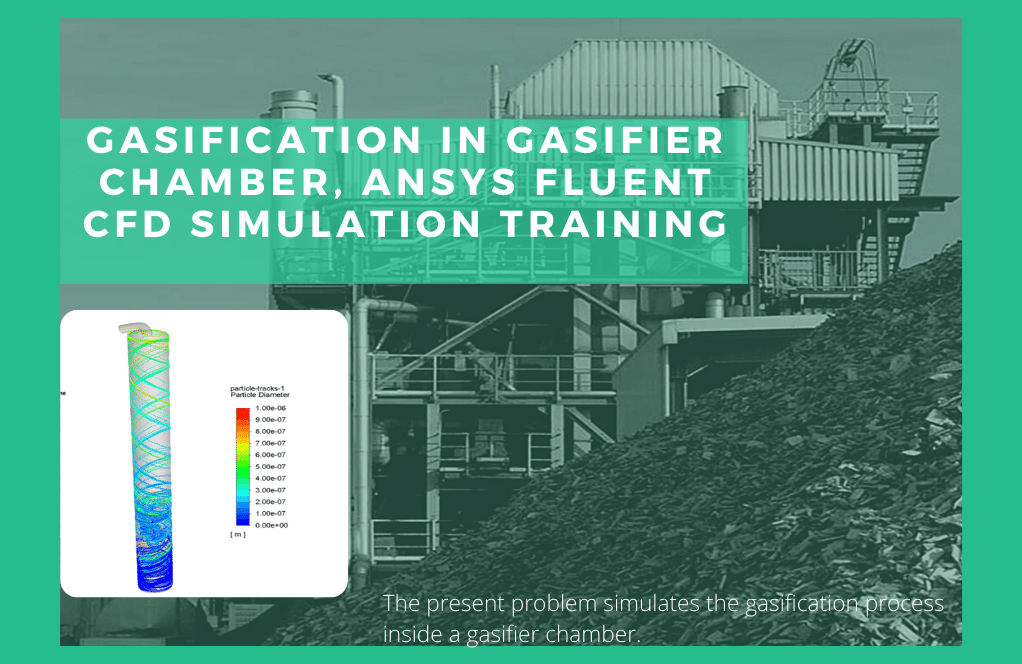
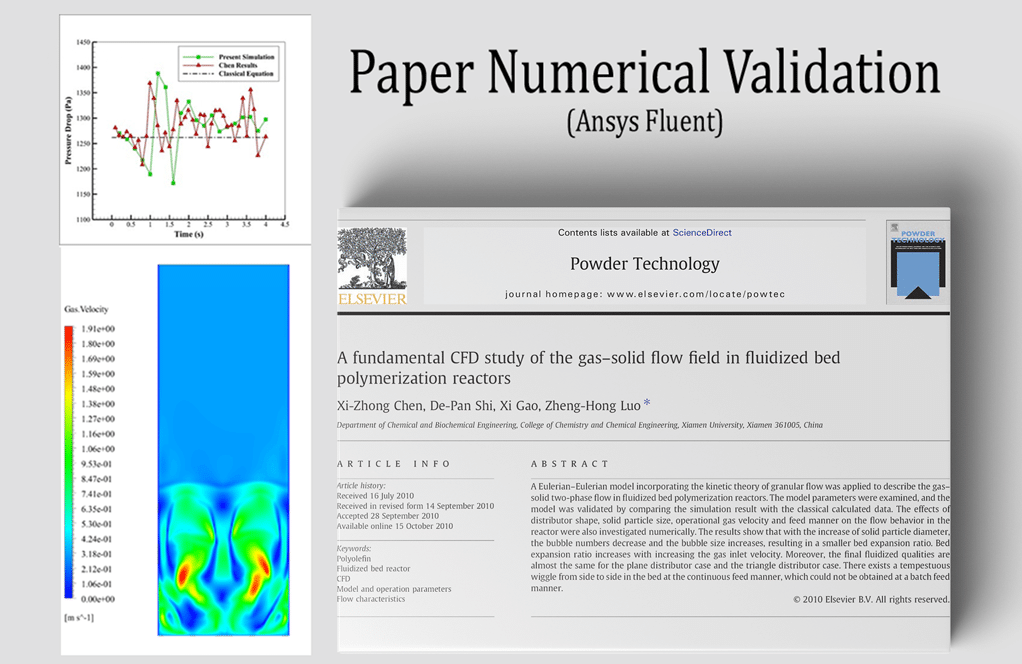
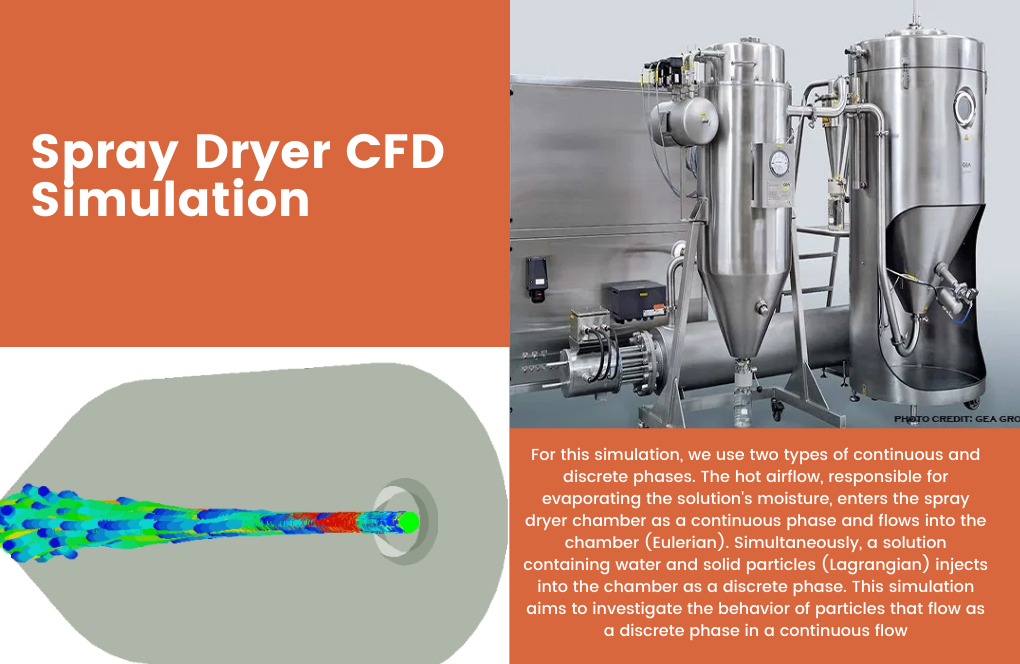
Andrzej Grawer –
Is discrete phase module used in this project??
Mr CFD Support –
No sadly. Only hydrodynamic validation is carried out. But we have other products which you can use to learn about the Discrete phase module like:
https://www.mr-cfd.com/shop/cyclone-cfd-simulation/
https://www.mr-cfd.com/shop/discrete-phase-flow-trap-trapper-by-gravity-cfd-simulation/
Lorna Haley –
I’m impressed with the level of detail on CFD simulation for the Hydrocyclone with a tangent-circle inlet. The comparative validation with an academic papers appears thorough. Great job!
MR CFD Support –
Thank you for your positive feedback! We’re delighted to hear that our detailed approach and comparative validation with academic research have met your expectations. If you have any further questions or need support, please don’t hesitate to reach out.
Helmer Bosco –
The Hydrocyclone simulation sounds complex. Was it challenging to get the multiphase model to accurately reflect the paper’s results, and how did you ensure the validation was thorough?
MR CFD Support –
Thank you for your interest! In a simulation as sophisticated as the one for the Hydrocyclone with a tangent-circle inlet, achieving accuracy in replicating the results from the paper requires meticulous attention to detail in setting up the multiphase model. Validation is ensured through a diligent comparison of the simulation results with those presented in the reference paper, including similar measurements of critical parameters such as axial velocity profiles and phase distribution. Parameters such as inlet velocity, turbulence modeling (using the Reynolds Stress Model in this case), and phase interaction (handled by the VOF multiphase model) are all carefully calibrated to achieve a high level of congruence with the findings of the reference study. The transient nature of the results also plays a pivotal role, as it considers time-dependent behaviors that can be crucial to understand the dynamics within the Hydrocyclone.
Jevon Hegmann –
I wonder if you can also consider oil as a third phase in this simulation?
MR CFD Support –
In the specific simulation detailed in this product, only the two-phase flow of air and water is modeled and validated against the reference paper. Additional phases, such as oil, can be introduced into a simulation using multiphase models such as VOF, but it would require additional setup, boundary conditions adjustment, and potential validation against experimental or literature data for accurate results.
Rickie Dach –
I was fascinated by the accuracy of the simulation compared to the published article’s data. Could you explain how the validation process helped ensure the reliability of the simulation results?
MR CFD Support –
In the validation process, we carefully compared the simulation output with the experimental or numerical data presented in the referenced article. The axial velocity profiles and separation efficiency, among other factors, were examined to ensure that the simulation predictions were consistent with the published results. Matching these variables helps confirm the accuracy of our numerical model and the physical parameters used. This rigorous comparison allows us to have confidence in the simulation’s ability to reproduce realistic behaviors within a hydrocyclone system.
Carmella Gleason –
I enjoyed working on the Hydrocyclone with a Tangent-Circle Inlet CFD Simulation, and comparing the results with the paper provided a great way to validate the simulation’s accuracy. I learned quite a lot from the numerical methods applied.
MR CFD Support –
Thank you for your positive review! It’s fantastic to hear that our simulation product not only provided an educational experience but also the satisfaction of achieving accurate results. Validation against a reference paper is indeed a vital step in ensuring credible simulation outcomes. We appreciate your feedback and we’re glad you found the methodology and learning process beneficial.
Augustus Rodriguez –
I am impressed by the comparison and validation against a reference article. Could you tell me more about the results? Were they closely matching with the existing literature?
MR CFD Support –
Thank you for your kind words about our simulation comparison. Yes, the results of our simulation matched very well with the results presented in the reference article. For instance, the changes in the axial velocity of the fluid mixture based on the radial position were well-captured, ensuring that our model successfully replicates the hydrocyclone’s intricate flow dynamics described in the article.